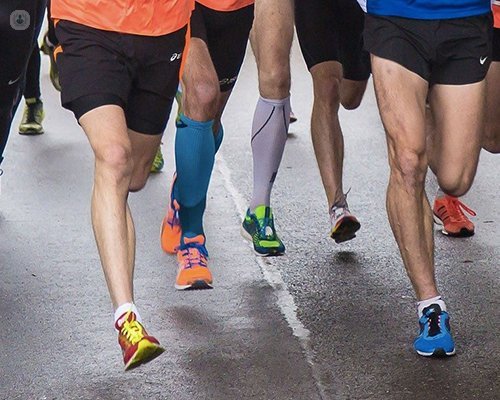Torn ACL ligament: What is ACL reconstruction?
Written by:A torn anterior cruciate ligament (ACL) is a common injury, especially for people who play sports. If treated well, you can return to full sporting activity following surgery. This article explains all about the procedure.

What is ACL reconstruction?
ACL reconstruction is a common ligament reconstruction surgery undertaken for the knee. It is performed arthroscopically and using graft tissue from around your knee. The surgery is performed to replace the anterior cruciate ligament (ACL) one of two ligaments in the knee that are formed in a cross formation. There are four main ligaments in the knee, of which the ACL is one.
What does it involve?
The reconstruction is made using a choice of material or graft. Several options are available, with the main ones being hamstring tendons, patella (knee cap) tendon, human donor tendon, and synthetic ligaments to name a few. Your orthopaedic surgeon specialist will discuss the options with you.
During the surgical procedure, your knee is prepared with surgical anti-septic solutions. The graft is harvested usually from around your knee. For a hamstring graft, a small cut is made on your leg and the tendons are pulled out with special instruments. A longer cut in the middle is used for patella tendon graft harvest.
The knee joint is then visualised using a keyhole (arthroscopic) camera and specially-designed instruments and drills that can pass through keyholes placed in front of the knee to prepare bone tunnels at the site of the previously torn ACL. Screws or anchoring devices are used to then fasten the new ACL graft to the bones on either sides of the knee joint.
Most other injuries of the knee, such as meniscal tears, can be addressed at the same time.
The actual procedure takes approximately 45 minutes to an hour. Additional time is required for giving anaesthetic and for waking up after. In total, the time spent in the operating theatre may be approximately two and a half hours.
What are the possible risks of surgery?
The most common complication that can occur following an ACL surgery may be related to the anaesthetic, the procedure, or the recovery afterwards.
- Anaesthetic: Most types of modern anaesthesia are safe and have minimal complications. The anaesthetist will check your fitness prior to surgery and warn you about the risks such as sickness, vomiting, and allergic reactions.
- Risks of the procedure: Any surgical procedure is associated with a risk of infection. To decrease the risk, patients will be given antibiotics prior to surgery. In addition, any surgery to the lower limb is associated with a risk of deep vein thrombosis (DVT). This risk is reduced in a day surgery procedure such as ACL reconstruction. You are also given a special stocking to wear for 6 weeks to reduce this risk. Other common risks are that of numbness in the scars, bruising in the skin, and swelling and stiffness in the knee.
- Risks of recovery: During rehabilitation, it is important to follow the physiotherapy instructions and stick to the gradual increase in activity level. It is during this time that the ACL graft (new ACL tissue) incorporates into your bone, and any deviation from the norm may result in early failure of procedure.
Following rehabilitation, the knee should return to full function. Sometimes, the screws or fixation devices used to hold the graft may need to be removed in the long term. A very bad twisting injury may also re-tear your ACL graft and require further surgery.
What is the recovery time?
You are usually able to return to full sporting activity around 6 months after surgery. This follows a specific rehabilitation program that involves exercises focusing on range of motion, followed by closed chain exercises.


